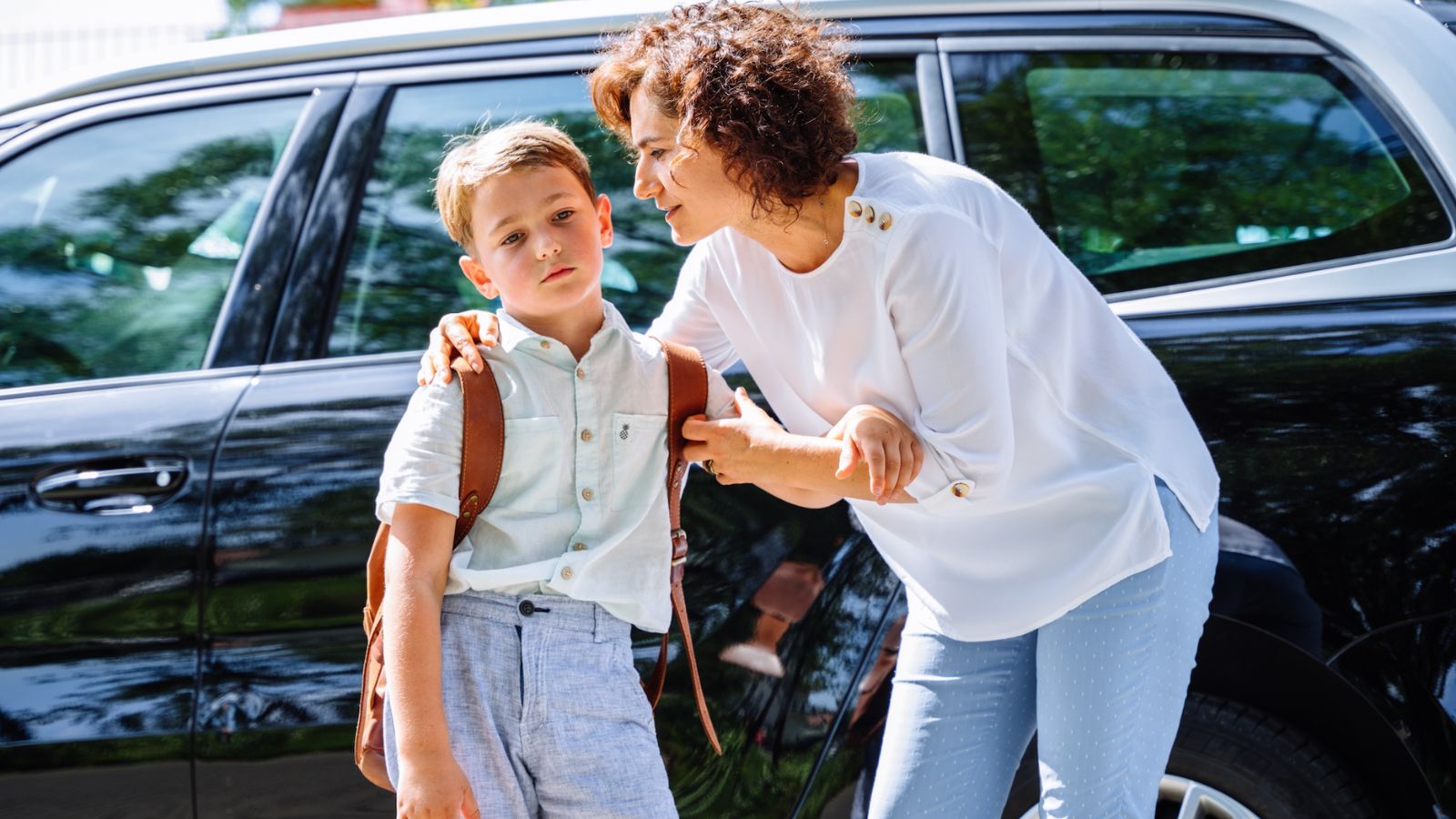Parenting was different in the ‘50s and ‘60s. Children were not strictly supervised, and parents had tougher parenting styles and fewer rules on what they could not do with their children. These rules have changed with time. This article talks about things from the ‘50s and ‘60s that parents cannot do today.
Using Corporal Punishment as Discipline

Parents, teachers, and other authority figures in the ‘50s and ‘60s commonly used physical punishment to discipline children. According to the Gallup Vault, 40% of children in 1954 reported being whipped as punishment. This practice is now highly controversial and even illegal in many places.
Serving Homemade Baby Food Without Concerns for Food Safety

Homemade baby food was the norm in the ‘50s and ‘60s. Parents prepared meals for their infants without much concern for food safety. The increased use of chemicals in food raises concern for most parents today. Most people are now attending parenting classes for proper guidance.
Leaving Kids Unsupervised for Long Periods

Parents in the ‘50s and ’60s were less concerned about child supervision. They often left children at home alone for extended periods as they went to the market or social events. Children were also left to play outside without constant adult supervision.
Allowing Young Kids to Walk or Bike to School Alone

Many children in the ‘50s and ’60s went to school on their own. The SRTS guide reports that almost 50% of children 5–14 years old walked or rode bicycles to school in 1969. This was seen as a normal part of growing up, as parents didn’t worry as much about stranger danger or traffic accidents.
Serving Sugary Breakfast Cereals Without Concerns for Nutrition

Breakfast in the past often consisted of sugary cereals lacking nutritional value. Parents didn’t worry about the content of breakfast foods or snacks for their kids. Nowadays, childhood obesity has become prevalent. There’s greater emphasis on providing nutritious breakfast options to support children’s health and well-being.
Letting Children Stay Out Late Without Constant Communication

Mobile devices were not available in the ‘50s and ’60s. Parents could not maintain constant communication with their children. Communication was limited to set times or places. Children enjoyed more freedom to play outside until dark without constant check-ins from their parents.
Permitting Children to Operate Dangerous Household Appliances

Parents in the ‘50s and ’60s believed in teaching their children skills through hands-on experience. Children operated dangerous household appliances like stoves and irons. Safety features on these devices were also less advanced. There’s greater caution today around allowing children to use such appliances with advancements in childproofing technology.
Taking Children on Errands Without Car Seats

The NHTSA reports car crashes as the leading cause of death among children ages 1 to 13. For most of the 20th century, kids rode unrestrained in the front or back seats of cars. It is now the law to use car seats for all children under 8 years of age or less than 65 lbs. for protection during a crash.
Allowing Children to Play with Unsafe Toys

Most toys in the past lacked safety standards. They often had sharp edges, small parts, or even toxic materials. Safety regulations for toys were minimal or nonexistent. Toy safety has become a big priority, with strict regulations to protect children from harm.
Giving Children Medications Without Prescription or Consultation

In the ‘50s and ’60s, parents frequently gave their children medications without seeking professional advice. Many parents used home remedies and folk medicine to treat ailments. On occasion, they used over-the-counter medications—the accessibility of drugs without prescriptions made this practice easier.
Hosting Birthday Parties Without Allergen Considerations

Birthday parties in the past rarely accommodated food allergies. Parents didn’t have much awareness or understanding of food allergies. Peanut products and foods with gluten were frequently served without concern for allergic reactions. Today, hosting a birthday party requires careful consideration of guests’ dietary restrictions and allergies.
Leaving Infants Unattended in Strollers or Carriages

Parents often left their babies sleeping outside in strollers while they shopped or socialized. Strollers were parked outside stores while parents went inside. They believed the fresh air was good for babies and were less concerned about safety. This practice is rare today, with increased awareness of potential dangers.
Allowing Children to Roam Freely in Public Spaces

Public safety was not a big concern in the past. Parents trusted the community to keep a watchful eye on their children in public places. Children moved freely in public areas without constant supervision. Nannies and caretakers are now always watching children in these spaces.
Giving Children Alcoholic Beverages at Family Gatherings

Attitudes preventing underage drinking have become stricter. In the past, children were occasionally given small amounts of alcohol at family gatherings. It was seen as a cultural norm or a way to teach moderation. Parents didn’t have the same concerns about minors drinking as they do today.
Leaving Babies Unsecured in Shopping Carts

Babies were commonly left unsecured in shopping carts while parents shopped. Today, shopping cart safety standards include provisions for securing infants, reflecting increased awareness of child safety in retail environments.
Allowing Children to Participate in Risky Playground Activities

Many games for children in the ‘50s and ’60s included risky activities, such as climbing trees and playing with dangerous equipment without close supervision. Falls and minor injuries were considered a normal part of play. Playgrounds have been improved with softer surfaces and age-appropriate equipment to minimize the risk of injuries.
Smoking in the Presence of Children

Smoking was a widely accepted practice in the 1950s and ‘60s. Many places permitted smoking, including planes, workplaces, and even hospitals. According to the Population Reference Bureau, 42% of Americans were regular smokers in the 1960s. They smoked indoors, at dining tables, and in the car, even with children present.
Permitting Children to Watch Television Shows Without Parental Guidance

There were no parental controls or content ratings to assist parents in monitoring their children’s TV viewing in the past. Therefore, parents didn’t closely monitor the content of television shows their children watched. Today, parents are more vigilant, using technology and guidelines to regulate their children’s exposure to age-appropriate content.
Allowing Children to Swim Unsupervised in Public Areas

Children in the past often swam unsupervised in public pools, lakes, and rivers. Lifeguards weren’t always present or attentive, and parents trusted in the swimming abilities of their children. Accidents and drownings led to strict supervision and water safety protocols being put in place.
Read More: Why People Aren’t Religious Anymore: 15 Simple Reasons

As society evolves, so does our approach to spirituality. This article looks at the subtle yet profound shift from traditional religious adherence to a more personal, evidence-based belief system.
Why People Aren’t Religious Anymore: 15 Simple Reasons
17 American Attractions That Not Even Americans Want to Visit

The United States of America—land of the free, home of the brave, and the location of some of the most ‘unique’ tourist attractions you’ll ever lay eyes on.
Get ready to chuckle, scratch your head, and maybe even facepalm as we look at 17 American attractions that not even Americans think are worth visiting.
17 American Attractions That Not Even Americans Want to Visit
17 Fairy Tales That Are Now Considered Racist

While fairy tales weave magical narratives that span generations, many emerge from historical and cultural contexts tinged with biases. Hiding in many of these tales, racial undertones can be found. Let’s look at 17 fairy tales that have deeper implications.
17 Fairy Tales That Are Now Considered Racist
18 Common Traits Found in Adults Who Had Unhappy Childhoods

Being a parent is a hard job, so even those who are truly trying their best will often miss the mark on creating the best environment for their children. Unfortunately, this means that many of us grow up with far-from-perfect childhoods that affect us into adulthood. Here are 18 common traits found in adults who had unhappy childhoods.
18 Common Traits Found in Adults Who Had Unhappy Childhoods
18 Things Old People Just Can’t Get On Board with Today

Over the past few decades, society has evolved, and with it, so have a few things that older generations find it uncomfortable to get the hang of. While younger generations are easily able to adapt to these changes, some of which are drastic, others may be struggling slightly. Here are 18 things the elderly may have difficulty learning.

